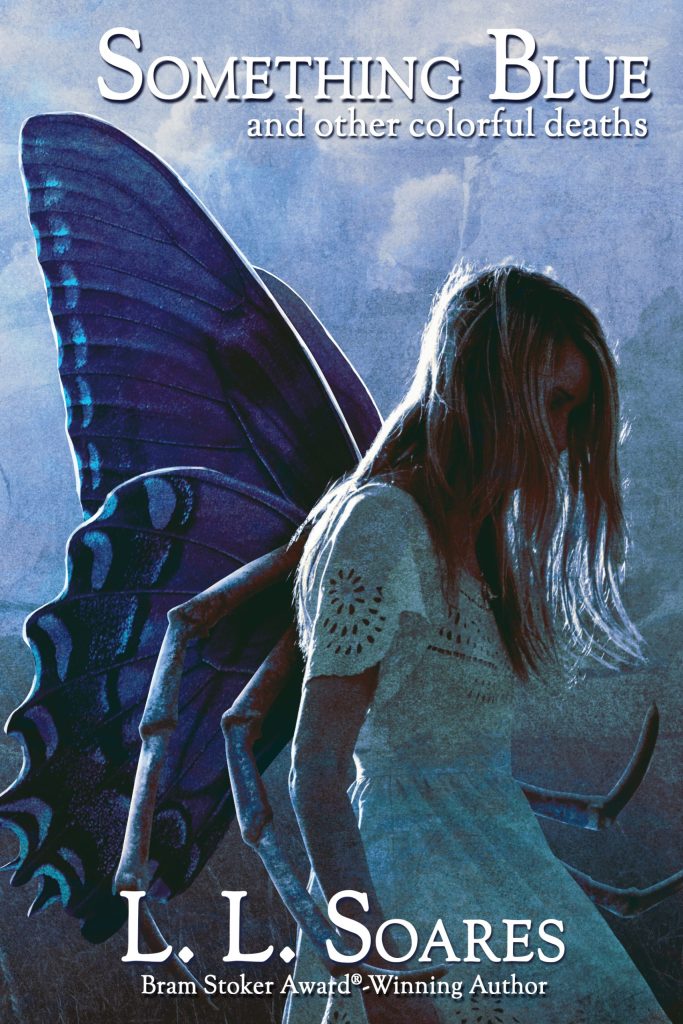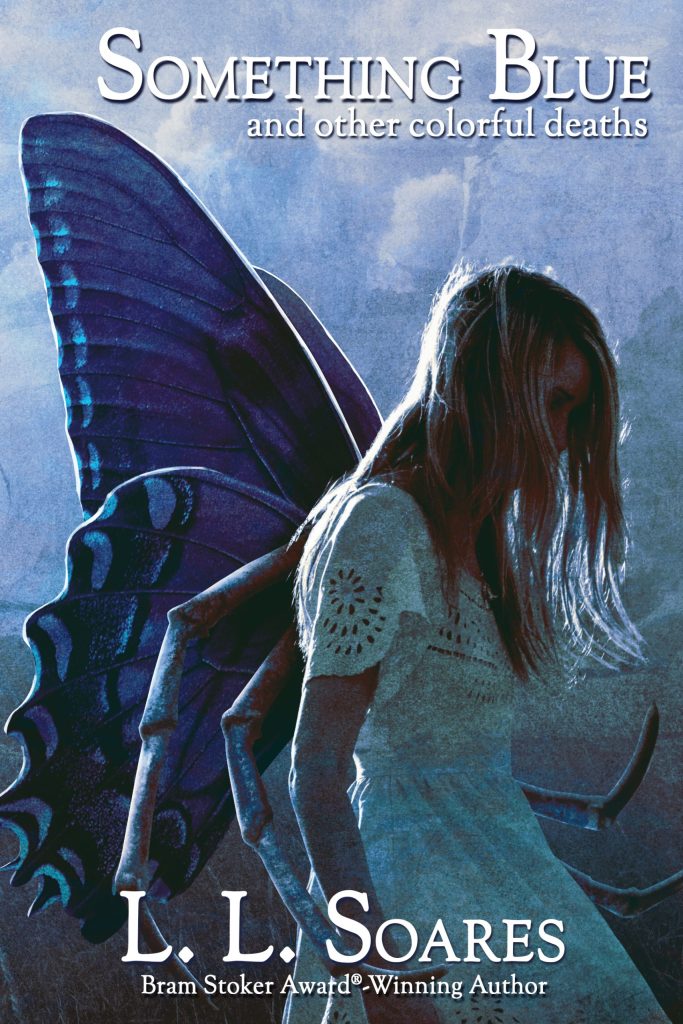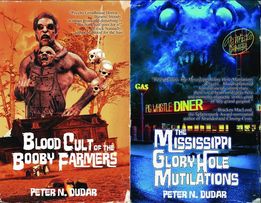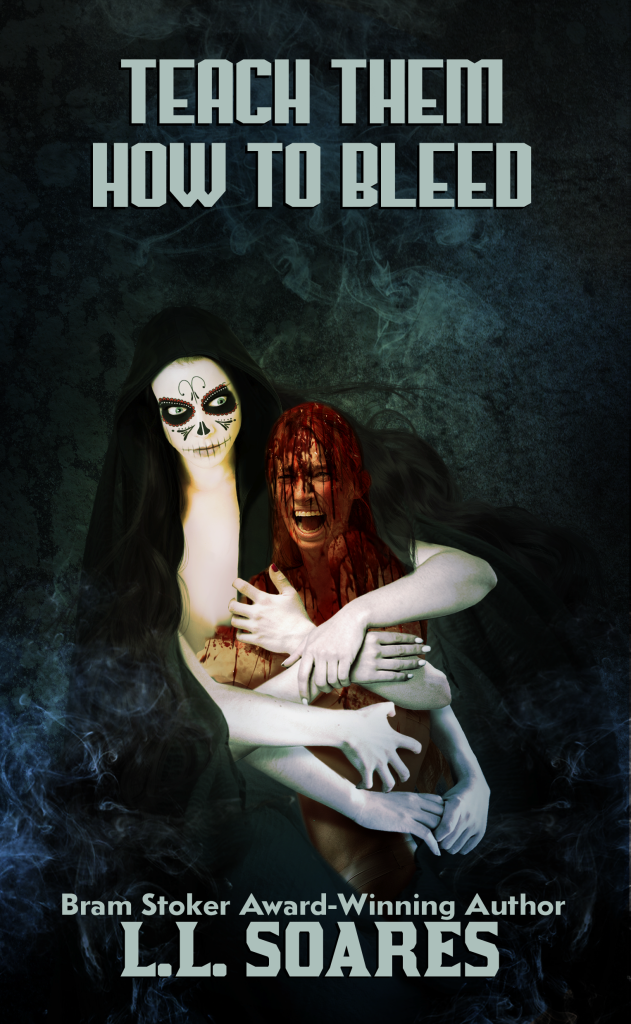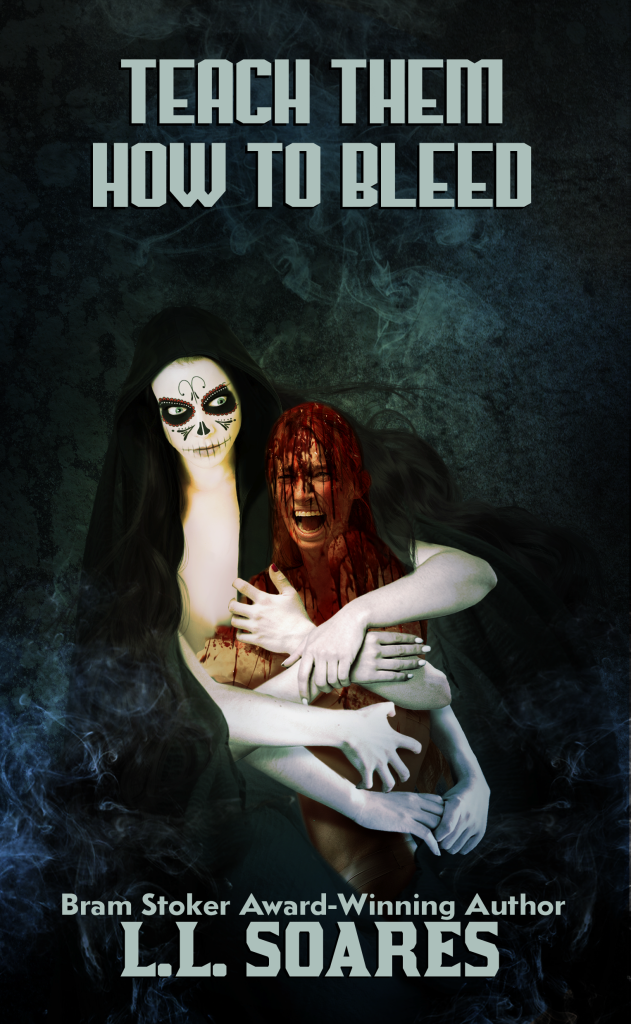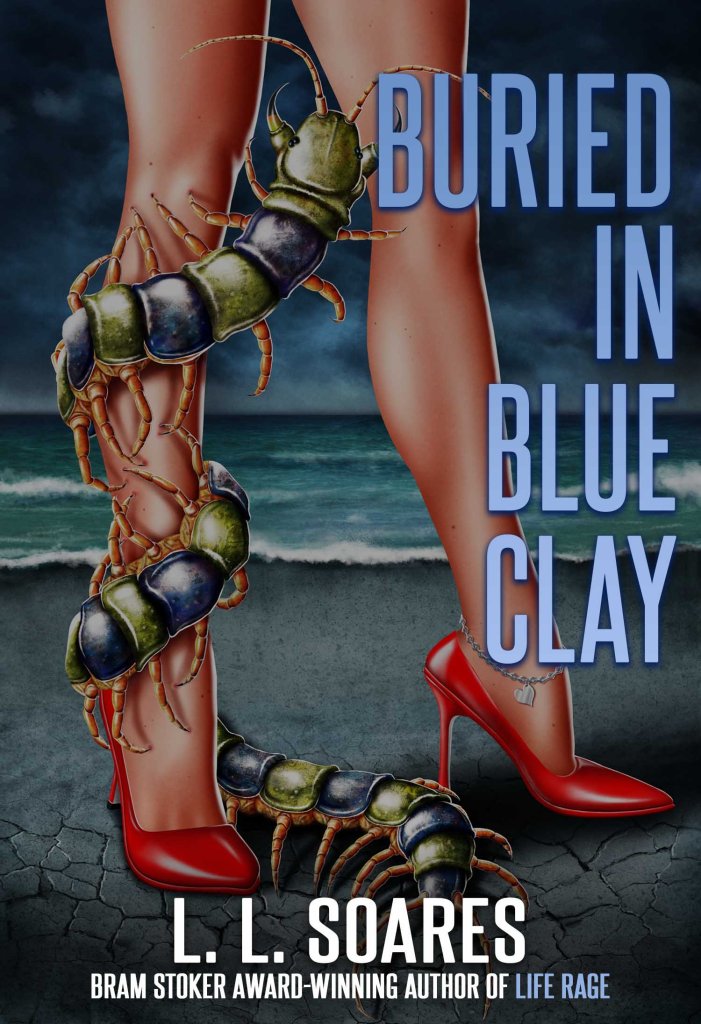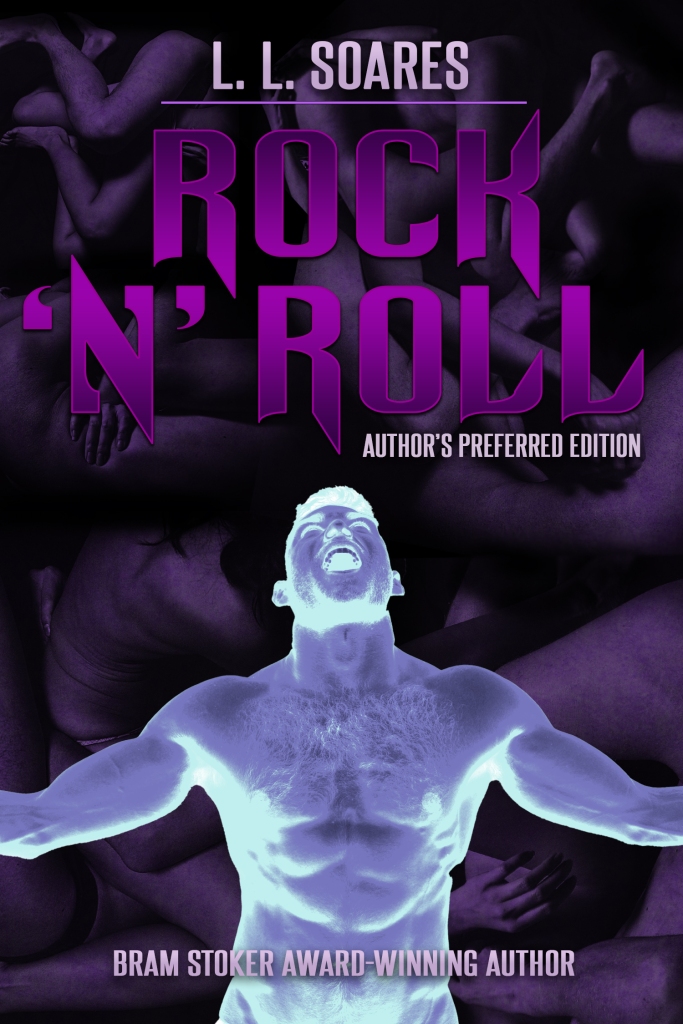PART ONE: PETER DUDAR INTERVIEWS L.L. SOARES
PETER N. DUDAR: I’m here today to talk with the Bram Stoker Award-winning novelist L.L. Soares about his latest release, TEACH THEM HOW TO BLEED, published by Bloodshot Books. L.L., it’s great to speak with you again, and a huge congratulations on your fifth full-length novel. For those readers who aren’t familiar with your body of work, how would you characterize your fiction, and without too many spoilers, what can they expect if they dive in with BLEED first?
L.L. SOARES: My stuff tends to pull things in from different genres. I guess, at the most basic level, I’m a horror writer, but it’s not unusual for me to add elements of crime fiction, or science fiction, or even fantasy. And in my books, there is a very big emphasis on characters. If someone picks up BLEED without having read other things I’ve written, I think they’ll get a good taste of my style.
PND: Stylistically, BLEED has the feel of a gritty, hard-boiled noir story, which takes the vampire trope in a whole different direction than the classical vampire tale. What led to this decision, and what were some of the vampire myths you were happy to dispose of?
LLS: I have to admit, growing up, vampires were probably my favorite archetypical monsters. Zombies, for example, can give us some raw scares, but vampires can interact with us on our level, even blend in with us, and yet they’re predators. Over the years, vampires have become a list of tropes where you check things off, and I didn’t want to do it that way. I wanted to get rid of some of the baggage, and sort of reinvent them. I’m definitely not the first person to think that. I didn’t want to deal with stuff like crosses and coffins and bats, and all that more traditional stuff. I like fangs – they can be very effective as a visual metaphor – but they weren’t essential, either.
Vampires have survived in literature because they are adaptive to change. Whether it’s Stoker’s DRACULA, or the vampires of Anne Rice, who have a much stronger emotional life, or even Stephanie Meyers’ sparkly TWILIGHT vampires. Even if there’s a take on the subject I’m not a big fan of, I can recognize that each generation is able to adapt vampires in a new way, and it’s this fluidity that keeps them relevant.
Two things inspired me to write my own take on vampires. The first, I remember seeing a lot of movies over the years where we see vampires covered in blood, mostly because they tend to be messy eaters – and that’s terrific for a movie screen; it’s very cinematic – but I got to thinking that real vampires would be like alcoholics. They wouldn’t want to waste a drop. And so I came up with the idea of vampires who are so dialed into the need for blood that they’d meticulously want to get every drop of blood they can out of a victim
The other thing was I felt vampires were getting a little tired, and I wanted to inject some new mythology into them. On one level, I really wanted to make them scary again, and one major way I do that is I changed how someone becomes a vampire – it’s a process that involves great violence.
PND: At its heart, BLEED is a great example of the Revenge Story. My original assessment of the book was to refer to it as “an adult fairytale.” Is this accurate?
LLS: I started the book with a desire to do a vampire version of stories like HANG ‘EM HIGH (1968), where something awful happens to a character and he goes about killing off the “bad guys” who did this to him. That’s how Eliveer’s story begins. But then I went in completely different directions.
I guess that there are aspects of the book that could be seen as an adult fairytale, especially the parts that involve the Bottle World. I don’t think the book as a whole is like a fairy tale. It’s just one of the ingredients.
PND: BLEED has an ensemble cast that feels very reminiscent of your earlier novel, HARD. That is, we’re given multiple storylines that may or may not intersect throughout the course of the book, and some of these characters form partnerships that reminded me of “the buddy pic” for lack of a better term, where their banter and their own selfish needs can build either a marvelous sense of conflict or bring out the best in themselves. My mind immediately jumps to characters of L.B. Jade and Slow Henry.
LLS: The ensemble cast goes back to my first novel, LIFE RAGE, where I looked in on several different characters, and then slowly drew them together. I like working with a big palette – a whole range of colors – and trying to flesh them all out. It’s a challenge and a joy. I notice a lot of my work tends to be either an ensemble kind of story, or sometimes I go the first-person narrator route, and there are benefits and disadvantages to both. I like the intimacy of the first-person story, and the way you can get inside someone’s head – but the narrator can’t be everywhere and know everything, so the ensemble story offers more ways to open up the narrative and see a full range of people, with different feelings and motivations. And yes, sometimes these characters have a kind of “buddy pic” feel to them.
As for Jade, she can change her gender at will. She quite literally is “gender fluid” in that whatever fits her best in a moment; she can change herself to reflect this. But this is not a new idea. There have been protagonists that can change their sex before – the most obvious examples being Virginia Woolf’s ORLANDO and the great science fiction character Jerry Cornelius, created by Michael Moorcock, starting with THE FINAL PROGRAMME, who could also change gender when he/she saw fit. By having this ability, Jade can seem more fleshed out, in that both the male and female aspects of her personality are on display.
But that’s just one aspect of Jade. I’d prefer if readers discovered Jade and Henry on their own.
PND: The novel also introduces us to Eliveer Davies, who seems to be the lead character at the beginning of the novel. I was wondering, how do you devise names for your characters? It seems like your fiction is full of characters with odd or extremely rare names, including Eliveer.
LLS: I’m always looking for unusual names. Sometimes they just jump out at me. Eliveer is an unusual one. I remember being a teenager in a graveyard, and I saw the name Eliveer on a tombstone and it always stuck with me. I always knew I’d use it in a story sometime. Maybe it goes back to my own first name, Lauran, which is unusual (almost everyone I know spells it wrong, with an “en” at the end), which is kind of unique. The only other people who are named Lauran that I know of are my father and a western writer named Lauran Paine.
PND: Let’s talk about The Madonna of Skulls, the apparition on the cover of the book, with the sugar skull face and six arms. Who is the she, and how does she tie into the vampire cadre?
LLS: I’m not sure I want to go into the Madonna’s origins too much. That may be fodder for another tale. The original idea I had, I think, while writing it was “What if Jeannie from I Dream of Jeannie was evil?” Instead of granting wishes, she was more likely to kill someone you didn’t like. But then it evolved into a whole world inside her bottle, that she escapes from. The Bottle World is a homage to the kinds of “wonderlands” that have been in fiction for centuries. I’ve always been a fan of those kinds of stories, whether it be Lewis Carroll’s Wonderland, L. Frank Baum’s Oz, or, to a lesser degree, C.S. Lewis’s Narnia, or whatever. So when we begin to explore the Bottle World, the first creature we meet is a kind of Bizarro World version of the Cheshire Cat that is both kind of hideous and possibly sinister.
PND: There are still a lot more characters involved in the story, and you’ve really created this violent, blood-soaked tapestry with an impressive body count in your novel. Do you find this kind of thing missing in the books coming out nowadays, or are you merely writing to satisfy the reader in yourself?
LLS:I started writing when I was about six or seven years old. I was really into monster movies as a kid, and my first stories were kind of like one-page sequels to movies I had seen on TV. I’m sure if I read one now, it would awful! But it was a start. A lot of people I know had no idea what they were going to be when they grew up, but I knew from very early on that I was going to be a writer, and that never altered. I started submitting stories to magazines (mostly science fiction) back when I was still in high school, so I had this dopey idea I was going to be published early on and have a long career as a writer. But it didn’t turn out that way. For almost two decades, all I ever got were rejections. So by the time I finally started to get published, it almost looked like I was a late bloomer, which was frustrating!
All that said, it has taken a long time for my style to evolve. And it’s still evolving. But I write a certain way, because that’s my voice as a storyteller. It’s not a conscious thought to write something that is lacking elsewhere, so much as it’s just how I tell a story.
One thing I’ve always held in high esteem is originality. I’ve always striven to write something new and original. But, in a genre like horror, sometimes readers also like things that are familiar to them. TEACH THEM HOW TO BLEED was the first time I thought I’d take something familiar, like vampires, and do my own unique take on them. In fact, I think I use the word “vampire” only once or twice in the whole book – most of the time I refer to them as “beasts.”
PND: I think the artist who provided the cover for the book did a marvelous job. I’ve commented privately that I thought the cover of BLEED reminded me a lot of the old BLACK SABBATH album covers. It’s immediately evocative, and really captures what your book accomplished inside my mind.
LLS: Yes, I want to give props to artist Carlos Villas for the cover. I think it looks terrific. I came up with the basic concept – even though the Madonna of Skulls is kind of a minor character in the book, I thought she was the most visually interesting, and I thought people would look at that cover and think, “What’s this about?” – but Carlos definitely made it his own.
PND: Again, we have all the elements of the noir story here, with gritty, flawed characters trapped in this world of hopelessness and literal darkness. It almost feels as if this particular novel was written with a big screen adaptation in mind. Yet you’ve managed to intersect this darkness with some moments of real beauty and humanity. Is this your way of maintaining a sense of balance in your writing? Do you need moments of light just to illustrate how dark the rest of the novel can get?
LLS: That’s funny, because I think BLEED is one of the most upbeat things I’ve written, in a way.
But I’ve always been drawn to the darkness. I just always found the seedier aspects of life to be the most interesting. Whether we’re talking about sex workers, drug addicts, criminals, murderers, or yes even vampires. I never had the desire to suddenly write a romantic comedy or something. I just go where my strengths (and interests) lead me. And, if a story goes in a bleak direction, that’s never turned me off. I guess in the worlds I write about, bad things happen, and a lot of times there is nothing anyone can do to save you. God’s not going to save you, other people aren’t always going to be able to, and, no matter how tough you are, you can’t always save yourself. But that’s okay. I find that lack of a safety net to be fascinating.
But I also like the idea of using whatever tools you have to tell a story – so if there are noir elements, or fantasy, or whatever, it’s because I see all of these as different tools, and I like to use them all. There are also parts when I use humor to decompress things a little. Why have them if you’re not going to use them? It’s kind of like music – when I was a kid, everyone was like “It’s either rock or disco.” Later, when I was heavily into punk rock, it was a choice between “punk or metal.” Growing up, there were always radio stations that just played one kind of music. Rock, country, pop, alternative. But now, looking back, I want to draw from everything! I want to throw some jazz in there, a smidgen of blues, a classical aria, a big scoop of hip hop. I like it all, and I want to be able to use it all in the stories I tell. That’s what makes my stuff personal. The ability to draw from all my interests.
On my most basic level, I think horror is what is at the heart of most of what I write. Horror is part of my DNA – the first time I ever really felt “I fucking love this!” was when I was a kid and saw the 1931 FRANKENSTEIN for the first time. I didn’t know what I could do, but I wanted my life to somehow involve this genre or this sensibility and how I could use it to tell stories. My palette – to get back to the painting reference – is a lot bigger now. And I want to try everything. But horror will probably always be at the heart.
PND: Tell us what you’re working on now, and what your fans can expect in the immediate future.
LLS: I’m working on a few things. I don’t like to talk too much about works in progress – not because I am superstition or anything – but because I find, the more I talk about something to other people, the less interesting it is to me. I have no idea why – but I’ve had novels stall out on me, and I want to do whatever I can to keep the creative process spontaneous, to some degree. That’s why I don’t outline very much when I’m writing a book. I’ll outline maybe one or two chapters down the road, but never the entire thing at once. Because I know I’ll get an idea I never thought of at some point, and I want to be able to embrace whatever comes my way that appeals to me, without having to stick to a rigid plan.
I’m always working on something, and spontaneity is a big part of the creative process for me. That said, I am working on a crime fiction novel that is also a mash-up of horror and some science fiction. And I have ideas for sequels to TEACH THEM HOW TO BLEED, expanding on the world of these characters, and my last novel, BURIED IN BLUE CLAY. But which of these actually gets written is up in the air.
More immediately, I have a story in the upcoming New England Horror Writers anthology WICKED SICK, and a career-spanning short story collection coming in 2023 called SOMETHING BLUE And Other Colorful Deaths.
PND: So who are your influences. You said you’re into a lot of different genres.
LLS: When I was a kid, I remember reading a lot of horror early on – the classics – like Poe and Lovecraft. And lots of books about horror movies. In high school, I got more into science fiction, but the writers I was drawn to most were ones who either had a horror tinge to some of their stuff, or who experimented in different genres, especially those who were part of science fiction’s “new wave.” People like Fritz Leiber (who was a master of science fiction, horror, and fantasy), Theodore Sturgeon, Joanna Russ, Thomas Disch, Samuel R. Delany, Norman Spinrad, John Brunner, and, of course, Harlan Ellison.
In crime fiction, I’m a hardcore Jim Thompson fan, and also dig writers like Patricia Highsmith, David Gaddis, and Charles Willeford. I also really like transgressive literature, for lack of a better word, like William S. Burroughs, Charles Bukowski, and J.G. Ballard. Ballard is especially important to me. In more modern horror, I really love the darker writers, like Jack Ketchum, Clive Barker, Richard Laymon, Ray Garton, and Edward Lee. But also writers like Charles L. Grant, T.E.D. Klein, Dennis Etchison, Lucy Taylor, Michael McDowell, and the great Shirley Jackson. I enjoy extreme, subtle, and literary horror. All that matters it that it’s good! And then you have someone like Joe R. Lansdale, who can write anything, and kick ass doing it! And I almost forgot Flannery O’Connor, a wonderful writer who is pretty much a genre all her own.
I didn’t get into Stephen King until later on. I actually thought he’d be too mainstream for my tastes. I think the first time I read him, someone had given me a copy of GRAVEYARD SHIFT. Soon after I read CARRIE and THE STAND, and realized how great a writer he is. And his ON WRITING is one of the best books about the craft of writing that I’ve read.
PND: What about contemporary authors? Whose books are you seeking out at the horror conventions and on Amazon? Who would you like to recommend?
LLS: A lot of our contemporaries are putting out great work right now. I know I’ll miss people, but names that come to mind include Jeff VanderMeer, Adam Nevill, Paul Tremblay, J. Edwin Buja, Gretchen Felker-Martin, Michelle Renee Lane, Brian Keene, Ed Kurtz, Doungjai Bepko, Mary Sangiovani, Rena Mason, Tom Deady, Errick Nunnally, Trisha Woolridge, Tony Tremblay, Bracken MacLeod, and Matthew M. Bartlett. And that’s not even a complete list of the talented people we share a genre with. I also really enjoy whenever a new Peter Dudar book comes out. I know it’s going to be a fun ride!
PND: Again, congratulations on another remarkable entry in your oeuvre. I loved TEACH THEM HOW TO BLEED, and I know your fans are going to dig it as well. Any final thoughts you’d like to add about the book?
LLS: People who have read it so far seem to really enjoy it, especially the characters – which I’m obviously happy about. And I do notice, like I mentioned before, that my style, my voice continues to evolve. I hope I am getting better and better at it. You read someone like Chekhov and you realize how high the bar is, and that you’ll never reach that level, but you have to try. You have to reach for the stars. And maybe you’ll even grab a few every now and then.
PND: Thank you for your time.
You can order TEACH THEM HOW TO BLEED in paperback and electronic versions.
Here’s the link to the book on Amazon.
